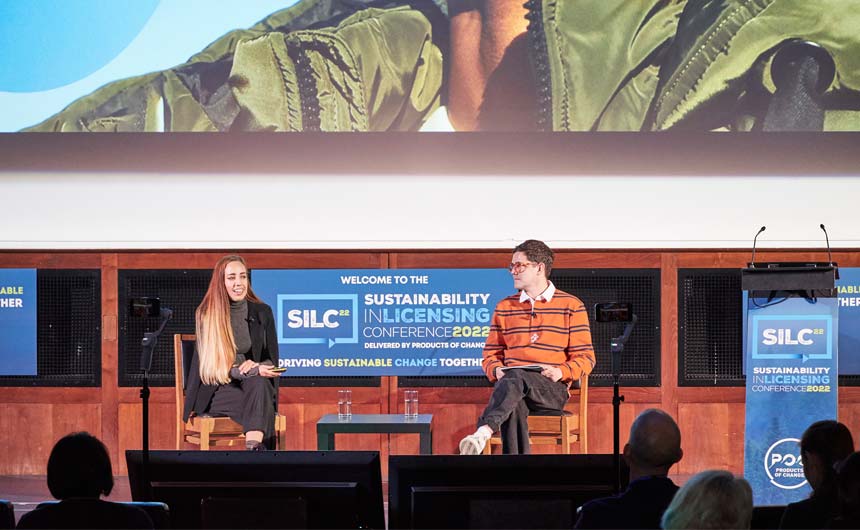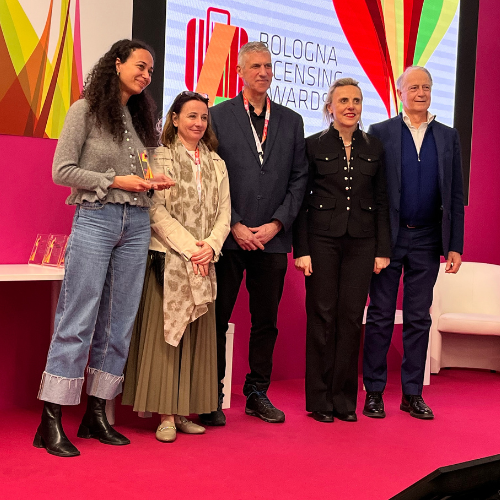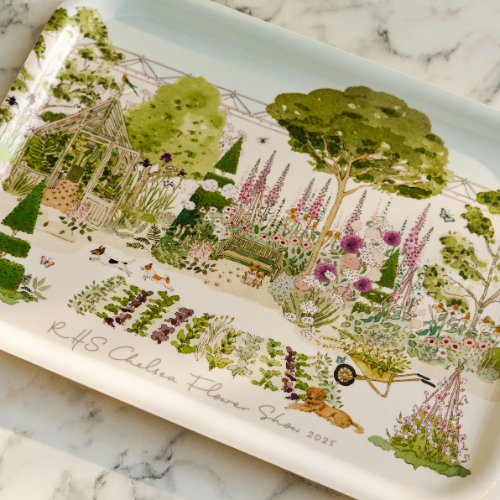Primark’s Sarah Hawkins and Harris McQueen took to the stage at the Sustainability in Licensing Conference (Tuesday, 18 October) to explain more about the retail giant’s Primark Cares programme and its progress to date.
Launched last year, Primark Cares is part of the company’s wider plan to create and implement a long-term sustainability strategy designed to future-proof the business and drive a re-appraisal of the brand, by tackling the most material and pressing environmental and social issues.
“It’s a 10-year strategy,” explained Sarah, manager of Primark Cares, “and our approach is three-fold. It’s about product, planet and people: giving products a longer life, protecting life on the planet, and enhancing people’s lives.
“We want to become a circular and sustainable business, and that’s really underpinned by three key commitments. The first is affordable clothes designed to last. We have road maps in place to ensure we strengthen the durability of our clothes by 2025, and we’re working with industry leaders like WRAP [the UK charity committed to accelerating the fashion industry’s move to circularity] to do that. We’ve also made a commitment that our clothes will be recyclable; at the moment, not all of them are designed to go through the recycling process, but by 2027, they will be. Also, the materials that we make those clothes from are really crucial. We want to ensure that we’re using more recycled and more responsibly sourced materials in our clothes, so we’ve committed to converting all of the clothes that we produce [to meet those criteria] by 2030.”
Other company targets include halving its carbon footprint by 2030 – not just in its own operations but through its whole supply chain of one million workers – while by 2027, the company is looking to have eliminated single-use plastics and packaging waste. It is also committed to ensuring regenerative agricultural practices are adopted throughout its Sustainable Cotton Programme by 2030; it intends to train an additional 125,000 cotton farmers in India, Pakistan and Bangladesh in more sustainable farming methods by 2023, bringing the total number of farmers in its SCP to 275,000 – an expansion of 80%.
The new strategy commits the international fashion retailer to change the way its clothes are made without changing its affordable prices. “Our goal is to enable everyone to make more sustainable choices when shopping,” said Sarah. “How can we do that? Firstly, we have absolutely made a commitment to ensure that sustainable fashion is accessible for all, and that’s really important to how we do business. It’s involves thinking about sustainability like any other business transformation project – we wouldn’t be asked if we might compromise digital or technological change at the expense of great prices, so as an industry, we need to stop putting sustainability in this magical box of ‘how do we achieve that?’ and start thinking about it as a business programme.
“Also, we need to think about the cost of not acting. What does that mean for our customers? What does that mean from a legislative point of view? What does that mean from an industry perspective? For us, it’s imperative; it’s built into our business now in a way that just has to happen. We’re excited to find new and innovative ways of bringing sustainability to life in a way that works for us, and the thing I’m most proud of is showing that if we can do it with Primark prices, then actually the industry can move along with us. It’s time to spin sustainability on its head and start thinking about it as a real opportunity.”
The customer needs to be brought along on the journey as well, Sarah stressed. “It’s really confusing for customers right now, both in terms of finding out what is sustainable and what brands are sustainable and what’s credible, so as an industry I think we need to work more on being more transparent and also on educating customers about what they need to be looking for.”

“How do you get customers valuing their clothes, especially if they’ve bought them for a lower price? How do we get customers to love clothes regardless of how much they’ve paid for them, for longer? We already meet industry standards on durability; we’re trying to push that further and come up with something that’s really industry-leading in terms of that durability space and show that value clothes do last just as long. Repair is also key. We are currently running 44 free repair workshops, and we’re looking at other innovative solutions and business models. They’re not at scale yet but we’ve got to start exploring them. We’ve just launched a new pre-loved, vintage solution in two of our stores called Well Worn, and it’s really exciting to see how engaged people are with the second-hand industry.”
At the end of the year Primark will be releasing its first Sustainability and Ethics Report, which will detail its progress to date. “Hopefully you’ll be able to see that we’re pushing the boundaries and pushing this through as quickly as possible,” said Sarah. “For instance, right now, 39% of our product is made from recycled or more sustainably sourced materials, and at launch just over a year ago, the figure was 25%.”
Progress is happening in the licensing space, too. “More licensors are looking for sustainable practices,” Harris, global licence manager (adults), explained. “We have some big direct to retail partnerships with the likes of Disney, Warner Bros and others, and we’ve aligned with them on our sustainability strategy and they’re fully on board with the way we’re progressing. Primark is always looking for new IP and licensor collaborations and I’m happy to say that partners are always passionate about sustainability. It’s top of the list of things they ask for and want to be reassured about.”
Ensuring traceability and transparency across Primark’s vast supply chain is obviously a monumental task, but the retailer is exploring every possible solution – and collaboration and innovation are very much a part of the strategy.
“As a business we’re looking at all the types of technology out there and also looking in that start-up space at what’s coming in the future, because as yet we don’t have all the technology to hand to deliver everything we want to do,” says Sarah. “But we’re looking at how we can use our scale for good by investing or supporting those smaller businesses and helping them to scale, so we can meet all our ambitious targets.”
Want to read more news like this? Simply sign up to our daily digest by clicking here. You can also follow @LicensingSource on Twitter and @licensing_source on Instagram.

































